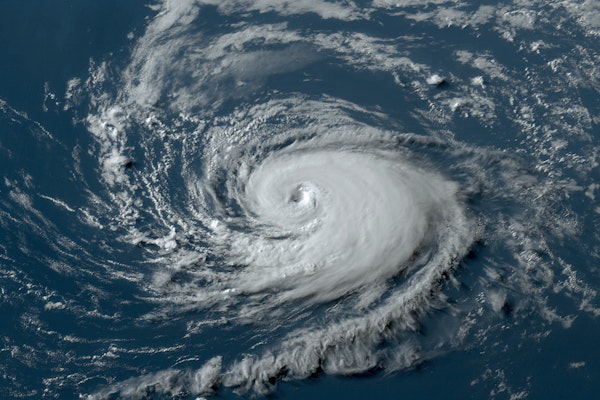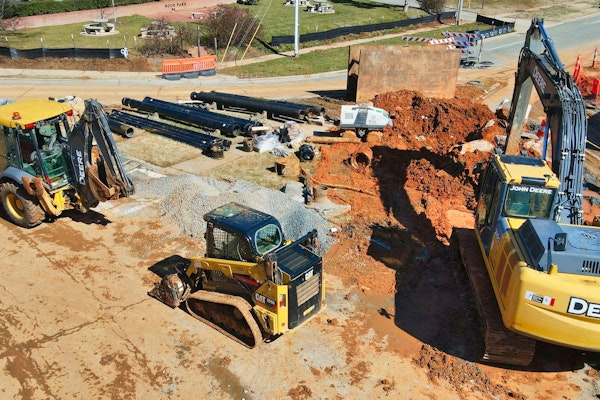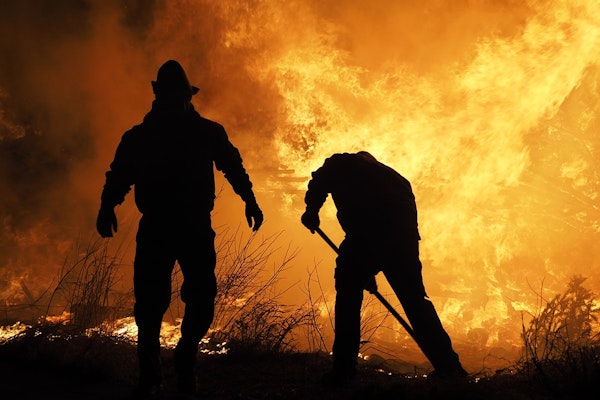
Global Risk Crisis Intensifies as Economic, Climate, and Cyber Threats Intersect
Economic uncertainty, climate change, and cybersecurity threats are compounding risk exposure across industries, creating a fast-evolving and interdependent crisis for insurers.
September 17
Catastrophe
Insurance Industry
Risk Management
Technology

Homebuyers Shift Search Strategies As Homeowners Insurance Costs Rise And Access Challenges Grow
A new Realtor.com survey shows rising homeowners insurance costs are influencing homebuyers’ decisions, with many adjusting search strategies or considering dropping coverage.
September 12
Catastrophe
Insurance Industry
Property
Risk Management

Federal Disaster Aid Approvals Are Taking Longer And Delaying Recovery Efforts
A new AP analysis shows presidential disaster declarations now take weeks longer than in past decades, leaving survivors and local governments waiting for critical aid.
September 12
Catastrophe
Legislation & Regulation
Property
Risk Management

Why the Atlantic Hurricane Season Has Suddenly Gone Quiet in September
Despite reaching the statistical peak of hurricane season, the Atlantic basin is unusually quiet this September, with no active storms and limited tropical development expected.
September 10
Catastrophe
Insurance Industry
Property
Risk Management
Florida
Georgia
North Carolina
Tennessee
Texas

How Construction Companies Can Prevent Common Builders Risk Claims
Construction projects face risks from theft, weather, fire, and more. Proactive site safety measures can reduce losses and keep projects on track.
September 9
Catastrophe
Insurance Industry
Property
Risk Management

High Insurance Costs and Climate Risks Push Homeowners in Vulnerable Areas to the Brink
A new Realtor.com report reveals that 1 in 4 U.S. homes face extreme climate risk, with surging insurance costs disproportionately impacting low-value, high-risk markets.
September 9
Catastrophe
Insurance Industry
Property
Risk Management

Underwriting Profit Triples for U.S. Property/Casualty Insurers in Early 2025 Despite Mixed Income
The U.S. P/C insurance industry posted a $11.5B underwriting gain in H1 2025, aided by fewer Q2 catastrophes, despite a sharp decline in investment-driven net income.
September 4
Catastrophe
Insurance Industry
Property
Underwriting
California
Georgia
Texas

NOAA Launches First Hourly Wildfire Risk Model to Improve Forecasting and Response
NOAA’s new Hourly Wildfire Potential Index offers hourly wildfire hazard forecasts, helping responders and forecasters better track fire activity and smoke emissions in real time.
September 2
Catastrophe
Property
Risk Management
Technology

Verisk Projects $152 Billion in Annual Global Property Losses from Natural Disasters
Verisk’s 2025 report reveals global insured property losses from natural catastrophes have surged to $152B annually, driven by more frequent storms and wildfires.
September 2
Catastrophe
Insurance Industry
Property
Risk Management

How a $100 Billion Hurricane Could Strike the US and What Insurers Need to Know
Major U.S. metro areas are increasingly vulnerable to $100 billion hurricane losses. This KCC report shows where it’s most likely and how insurers can prepare for the next big one.
August 29
Catastrophe
Insurance Industry
Property
Risk Management
Connecticut
Florida
Louisiana
Massachusetts
New Jersey

Smarter Repair Strategies Help Insurers Tackle Rising Commercial Property Claim Costs
Rising repair costs and labor shortages are reshaping commercial property claims, but managed repair models and pre-loss agreements offer faster, smarter solutions.
August 29
Catastrophe
Insurance Industry
Property
Risk Management
California

Southern Europe Faces Unprecedented Wildfire Risk as Climate Change Fuels More Intense Fire Seasons
This summer’s wildfires in Greece, Turkey, and Cyprus were made 10 times more likely by climate change, exposing gaps in preparedness and highlighting rising regional risks.
August 29
Catastrophe
Legislation & Regulation
Property
Risk Management

How Insurance Would Cover a Star-Studded Wedding Like Taylor Swift and Travis Kelce’s
From high-limit liability to cyber protection and paparazzi risks, insuring a celebrity wedding like Swift and Kelce’s involves complex underwriting and custom coverage.
August 28
Catastrophe
Insurance Industry
Liability
Risk Management

How Large Language Models Are Transforming Catastrophe Risk Modeling
Large language models are reshaping catastrophe modeling by integrating real-time unstructured data, enabling insurers to shift from reactive assessment to proactive mitigation.
August 26
Catastrophe
Property
Risk Management
Technology
California

Key Loss Adjusting Trends Shaping Property Claims in 2025
Sedgwick’s 2025 Loss Adjusting Insights Report explores the top nine trends—from tariffs and tech to legislation and climate change—reshaping property claims today.
August 25
Catastrophe
Legislation & Regulation
Property
Technology
California
Florida
Hawaii
Illinois
Iowa





